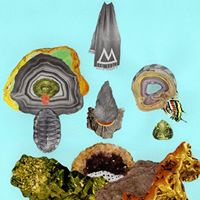Nicholas J Webb
age ~39
from Apple Valley, CA
- Also known as:
-
- Nicholas Web
- Nicholas Webbq
Nicholas Webb Phones & Addresses
- Apple Valley, CA
- Goshen, KY
- Hemet, CA
- Riverside, CA
- Winchester, CA
- Marietta, GA
- Louisville, KY
- Powder Springs, GA
- Berkeley, CA
Work
-
Company:Hollaent.com
-
Address:230 Cleveland Ave - Bay Point, Pinole, CA 94564
-
Phones:9255866092
-
Position:Executive
-
Industries:Disinfecting and Pest Control Services
Specialities
Bankruptcy & Debt • Health Care • Employment & Labor • Social Security • Litigation • Personal Injury • Medical Malpractice
Resumes

Facilities Manager
view sourceWork:
Star Partner Enterprises Two, Llc
Facilities Manager
Facilities Manager
Education:
Brookside High School 2006
Skills:
Team Building
Microsoft Excel
Microsoft Office
Microsoft Word
Outlook
Editing
Project Management
Management
Project Planning
Troubleshooting
Inventory Management
Restaurants
Contract Management
Sales
Leadership Development
Microsoft Excel
Microsoft Office
Microsoft Word
Outlook
Editing
Project Management
Management
Project Planning
Troubleshooting
Inventory Management
Restaurants
Contract Management
Sales
Leadership Development

Nicholas Webb
view source
Nicholas Webb
view source
Nicholas Webb
view source
Nicholas Webb
view sourceLawyers & Attorneys

Nicholas Webb - Lawyer
view sourceSpecialties:
Bankruptcy & Debt
Health Care
Employment & Labor
Social Security
Litigation
Personal Injury
Medical Malpractice
Health Care
Employment & Labor
Social Security
Litigation
Personal Injury
Medical Malpractice
ISLN:
1000994712
Admitted:
2021
Isbn (Books And Publications)

Name / Title
Company / Classification
Phones & Addresses
Executive
Hollaent.com
Disinfecting and Pest Control Services
Disinfecting and Pest Control Services
230 Cleveland Ave - Bay Point, Pinole, CA 94564
Website: hollaent.com
Website: hollaent.com
OHIO RIVER LAND COMPANY I, LLC
OHIO RIVER LAND COMPANY II, LLC
OHIO RIVER LAND COMPANY III, LLC
OHIO RIVER LAND COMPANY IV, LLC
Manager
Frame Tech, LLC
President
NJW ENTERPRISES, INC
9037 Arrow Rte #100, Rancho Cucamonga, CA 91730
Us Patents
-
Ophthalmic Instrument For Removing Foreign Objects
view source -
US Patent:57187088, Feb 17, 1998
-
Filed:Mar 7, 1997
-
Appl. No.:8/813048
-
Inventors:Nicholas J. Webb - Wrightwood CA
-
International Classification:A61F 900
-
US Classification:606107
-
Abstract:An ophthalmic instrument for removing foreign objects from an ocular surface includes a multi-purpose tool head attached at an angle to the end of a handle. The generally flat tool head includes a main body and an upwardly angled distal tip. A pair of side scoops are arranged on the sides of the main body, and an omnidirectional plane is arranged between the side scoops. A V-shaped notch with a sharply beveled front edge is arranged on one side of the main body. The upturned distal tip is usable for prying out partially embedded objects. The V-shaped notch is usable for securely engaging both sides of an object and gently rocking it loose. The side scoops and the plane are usable for scooping or rocking loose objects. A graduated scale is provided on the tool head for measuring the size of the foreign objects. Accordingly, the present ophthalmic instrument provides several tools for removing foreign objects of different sizes, shapes, and consistencies.
-
Collagen Forceps
view source -
US Patent:61743216, Jan 16, 2001
-
Filed:May 11, 1999
-
Appl. No.:9/310061
-
Inventors:Nicholas J. Webb - Wrightwood CA
-
Assignee:Eagle Vision, Inc. - Memphis TN
-
International Classification:H61B 1750
-
US Classification:606210
-
Abstract:The collagen forceps includes two elongate members coupled at a proximal live hinge. The elongate members are each provided with a knurled finger pad ergonomically contoured to stably receive a finger or thumb of a physician, and a manipulation tip having an interior collagen rod gripping surfaces. The manipulation tip of the collagen forceps includes two gripping channels preferably oriented substantially orthoganally relative to each other. In addition, the manipulation tip is preferably angled relative to an axis of the collagen forceps. The proximal end of the forceps includes a shaft which is also preferably angled relative to the axis, and thereby facilitates grip and balance of the collagen forceps in the hand of the physician.
-
Method Of Detecting Heat Seal Breaks And Package Thereof
view source -
US Patent:57276846, Mar 17, 1998
-
Filed:Aug 28, 1996
-
Appl. No.:8/704243
-
Inventors:Nicholas J. Webb - Wrightwood CA
Hiro Hayashi - White Plains NY -
Assignee:Mitsui Plastics Company - White Plains NY
-
International Classification:B65D 8500
G01N 1908 -
US Classification:206439
-
Abstract:An apparatus and associated method which detects breaks and irregularities in a sealing arrangement, especially in heat-sealed, sterile packages by providing a standardized verification bar on the package adjacent a color coded sealing area. The verification bar may indicate examples of a proper seal, an underseal, and an overseal, as well as common seal problems such as bubbles, hairline voids and regular coextensive voids. The package which is especially useful as a sterilization pouch can be visually inspected both by the user of the package contents just prior to use and by the vendor of articles in the packages post assembly of the article into the sealed and sterilized package.
-
Scalpel With Rotary Depth Guard
view source -
US Patent:55692850, Oct 29, 1996
-
Filed:Mar 23, 1995
-
Appl. No.:8/409140
-
Inventors:Nicholas J. Webb - Wrightwood CA
-
International Classification:B26B 2500
A61B 1732 -
US Classification:606180
-
Abstract:A scalpel includes a circular blade rotatably attached to one end of a handle. A circular depth guard having a diameter smaller than that of the blade is rigidly and coaxially connected thereto. The depth guard includes tractional knurls arranged around a rim thereof. Pressing the blade into a piece of tissue causes penetration thereinto until the depth guard engages the tissue. Pulling the scalpel along the tissue causes the depth guard to roll along thereon and rotate the blade, which makes a cut with a rolling motion that minimizes tissue adhesion and dragging for a smooth and even incision. The depth guard ensures that the blade cuts at a precisely known and perfectly even depth. The tractional knurls ensure reliable rotation of the depth guard and the blade even on wet and slippery tissue. In a second embodiment, a rotary depth guard is attached to a fixed blade.
-
Ergonomic Surgical Scalpel Sleeve
view source -
US Patent:55780504, Nov 26, 1996
-
Filed:Apr 4, 1994
-
Appl. No.:8/222601
-
Inventors:Nicholas J. Webb - Wrightwood CA
-
International Classification:A61D 1700
-
US Classification:606167
-
Abstract:A handle sleeve for facilitating the use of ophthalmic and micro-surgical instruments such as scalpels includes a flexible tube which can be removably attached to the instrument handle. The sleeve preferably has a knurling pattern or a plurality of ridges disposed on its outside surface, to improve traction and tactile feel. The sleeve provides a superior gripping surface and significantly reduces the force necessary for the surgeon to maintain dynamic control of the instrument during surgical procedures, and also reduces stress associated with repetitive movement injury and cumulative trauma disorder.
-
Medical Communication System For Ambulatory Home-Care Patients
view source -
US Patent:59022345, May 11, 1999
-
Filed:Apr 10, 1997
-
Appl. No.:8/837229
-
Inventors:Nicholas J. Webb - Wrightwood CA
-
International Classification:G06F15/42
-
US Classification:600300
-
Abstract:A medical communication system for monitoring an ambulatory home-care patient is provided. The system includes a two-way pager worn by the patient and a computer storing the treatment plan of the patient. The computer initiates the transmission of inquiries to the pager worn by the patient and records responses transmitted by the patient back to the computerized system. The computerized system can contact the patient anywhere within a local service area. The patient responds to one or more inquiries from the system by pressing appropriate buttons on the two-way pager which are sent back to the computer. The responses are recorded by the computer. If the computer does not receive a response from the patient or if the responses do not fall within compliance guidelines, an automated phone call is initiated requesting the same information. If the patient responds to the automated phone call, the responses are recorded by the computer. If the patient fails to respond or provides non-complying responses to both the pager and the automated phone call, the treatment plan is forwarded to a staff nurse, who attempts to contact the patient by telephone.
-
Blood And Other Body Fluid Containment Tray
view source -
US Patent:58363092, Nov 17, 1998
-
Filed:Jan 22, 1997
-
Appl. No.:8/787381
-
Inventors:Nicholas J. Webb - Wrightwood CA
-
International Classification:A61G 1500
-
US Classification:128845
-
Abstract:A containment tray includes a contoured cradle having a floor surface and a drain portion, an entrance portion, a support portion situated between the entrance portion and the cradle, a raised rim, and a lower rim. The raised rim is provided around the cradle and support portion and provides splash protection from the fluids which drain into the cradle and a surface upon which a physician may stably rest his hands when performing surgery on a head or other body appendage held within the cradle. The lower rim provides stability for the containment tray as it rests on a surface. One preferred aspect of the containment tray is that the containment tray is made from a substantially transparent material, thereby not inhibiting the ability of a physician to view a wound or surgical site. Another preferred aspect is that the cradle is sloped toward the drain portion to facilitate drainage. A non-permeable closed cell foam may also be provided on the floor surface of the cradle.
-
Microsurgical Scalpel Assembly
view source -
US Patent:58302263, Nov 3, 1998
-
Filed:May 2, 1997
-
Appl. No.:8/850867
-
Inventors:Nicholas J. Webb - Wrightwood CA
Richard W. Mendius - Millington TN -
Assignee:Eagle Vision, Inc. - Memphis TN
-
International Classification:A61B 1732
-
US Classification:606167
-
Abstract:A microsurgical scalpel assembly including an elongate scalpel handle and a scalpel blade affixed at one end of the scalpel handle and a shield releasably affixed to the one end of the scalpel handle and extending away from the handle to operably surround the scalpel blade to isolate sharp surfaces of the scalpel blade from a surgeon and to protect the blade from damage during a re-sterilization autoclave procedure.
Plaxo

Nicholas Webb
view sourceTokyoExecutive Investment Advisor at IFG Asia

Nicholas Webb
view sourceMarketing & Dealer Development at Brunswick Asia P...
Classmates

Nicholas Webb
view sourceSchools:
Lapel High School Lapel IN 1993-1997
Community:
Nancy Flaugher, Sherry Wolfe, Rachel Betz

Nicholas Webb
view sourceSchools:
Portage High School Portage IN 1996-2000
Community:
Edna Maturkanich, Rod Dennison, Kevin Durning

Nicholas Webb
view sourceSchools:
Lindstrom Elementary School Lakewood CA 1997-2001
Community:
Cyndee Barlass, Georgianne Glendenning, Calen Lybarger, Deborah Windisch, Barbara Dawson

Nicholas Webb
view sourceSchools:
Northridge High School Dayton OH 2005-2009
Community:
Bill Miller, Fred Coates

Nicholas Webb
view sourceSchools:
Abernathy Junior High School Abernathy TX 1999-2003
Community:
Cynthia Natal, Victoria Arreola, Angel Garcia, John Montgomery, Emily Petersen, Jennifer Garcia

Nicholas Webb
view sourceSchools:
Bourbon R-1 High School Bourbon MO 1992-1996
Community:
Scott Graddy, Stacy Parker, Jana Carrick, Lance Beckett, Neily Odam, William Greenlee, Daniel Whatley, Stacy Radford, Aimee Protte, Karl Campbell

Nicholas Webb
view sourceSchools:
Baden High School South San Francisco CA 1972-1976
Community:
Cindy Scarborough, Sylvia Pena, Pamela Zwerkowski, Chris Farron
Youtube
Myspace
Googleplus

Nicholas Webb
Education:
Simpson College - Political Science
Tagline:
I'm a wonderer and a wanderer.

Nicholas Webb
Work:
M on the Point - Bartedner

Nicholas Webb
Work:
Centa Left

Nicholas Webb
Tagline:
Real Estate Investments

Nicholas Webb
About:
Nicholas Webb is a prolific author with four books on the topic of innovation and customer experience, including “The Innovation Playbook,” “The Digital Innovation Playbook,” “The Innovation Superstar...
Tagline:
Speaker, author, inventor, CEO of Lassen Innovation

Nicholas Webb

Nicholas Webb

Nicholas Webb

Nicholas Webb
view source
Nicholas Webb Sr.
view source
Nicholas Scott Webb
view source
Nicholas PalanceGod Webb
view source
Nicholas Webb
view source
Karl Nicholas Webb
view source
Nicholas Lyle Webb
view source
Nicholas Joe Webb
view sourceFlickr
Get Report for Nicholas J Webb from Apple Valley, CA, age ~39


















